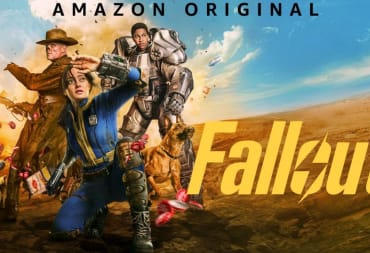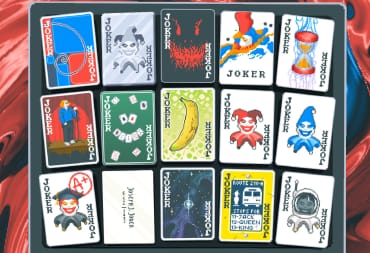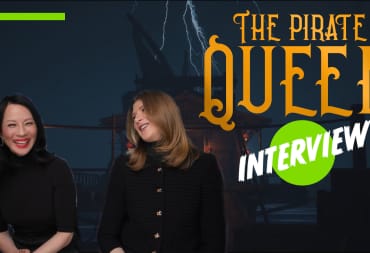One of the oldest genres in gaming is the puzzle/adventure-style game. In modern parlance, a slew of independent and small time point and click adventure games have filled the void left behind from the 1980's. Many of these games however fall prey to the same formulaic trap: visually striking to stand out, followed with a well written storyline to go with it.
The puzzles, however, sorely lack in most cases. Most of them tend to be trial and error puzzles where you rub the key item on the magical door to see what happens. Following such logic was the bane of most adventure games in the past and continues to be a challenge in the present. Even some of the best adventure games ever made, such as Grim Fandango or Loom, fall prey to this style as well. One of those games that didn't fall into this pattern, however, was a Mac/DOS puzzle adventure developed by one man in 1987, called The Fool’s Errand.
The man in question was independent developer Cliff Johnson, a former animator and “monster builder,” creating animatronic monsters for various amusement parks. After attending film school at The University of South California, he would work as an animator for Nickelodeon, creating several animations for the Nickelodeon show Out of Control in the mid-1980's.
The Fool’s Errand first started out as a book by Johnson, inspired by the work of Kit Williams and his treasure hunt book Masquerade and the 1972 movie The Last of Sheila, a whodunit which incorporated meta-puzzles in the narrative. For Johnson, the goal was to “make the experience pleasant and solvable in a single afternoon.” He also gained further interest from a deck of Tarot cards, and in Christmas 1981, created a twenty-seven page story and an 81-piece map. Giving the clues out through the text, the goal was to solve the puzzles to decipher a message for the holidays. Only three people solved it that year.

Johnson took this idea and ran with it. In 1984, he purchased a Mac 512K and spent two years learning how to code over fifty puzzles for The Fool's Errand, while stitching them together with a narrative. It would be tough for Johnson, who would spend nearly $50,000 to make the game, but the result however, speaks for itself. With simple, black and white graphics and a unique visual flair, Johnson was able to string his puzzles together to form his “meta-puzzle”, a solution hidden throughout the story.
The ironic thing regarding The Fool’s Errand was there was no set solution to the original game. “Beyond the story and map, I employed no master plan or blueprint for the puzzles,” said Johnson. “I worked in an intuitive manner, allowing myself to ponder this and that, tinker around, try things, see what I can discover. That’s how I approached the computer puzzles. I created whatever I felt was appropriate as I went along, checking off each story segment/map piece as I went.” The Fool’s Errand very rarely falls astray from the pattern presented, with Johnson creating the meta-puzzle as the story slowly progressed.
This is vastly different than most puzzle/adventure games. Most of the time, the narrative is hammered down first and the obstacles are created as a challenge to the player to fit that narrative. Some of the more successful games, such as Myst, The 7th Guest, and Tales of Monkey Island, are able to blend the puzzles into the narrative in a way that is abstract, but still engaging. The Fool’s Errand is unique because its story was developed behind the puzzles themselves and not the narrative.
As for the meta-puzzle, it was a product of circumstance. The main goal of the game is to piece together the “Sun Map” for the fool; once complete it gives fourteen more puzzles to the player to solve. “I was free to create a straightforward, no red herrings, unambiguous picture and puzzle adventure,“ said Johnson. “Every piece was important and every piece was used only once.” This allowed The Fool’s Errand to be tightly constructed, without tricking the player or forcing trial and error; there is always a solution, and it is in the game somewhere for you to find.
https://www.youtube.com/watch?v=mCY_OrFddEc
The Fool’s Errand would be such a success, it would later be ported to the Commodore Amiga and the Atari ST, both early home computers and video game machines. While it’s a twenty-seven year old game at this point, The Fool’s Errand is still available as freeware from Johnson himself, along with his other puzzle games 3 in Three and At the Carnival. Special emulators will be needed to play the game, but it is well worth the hassle for fans willing to test their mind on The Fool’s Errand.
So popular was the game, that Johnson decided back in 2002 to create a sequel, titled The Fool and His Money. The sequel would take ten years to create, finally released in October of 2012. Johnson retained the artistic style presented in The Fool’s Errand, adding sound and colored graphics for the first time for the PC version of the game. Many of those who endured the ten year wait for The Fool and His Money were immortalized in the game with an in-game screen called “The Compendium of True Believers.”
The Fool’s Errand is easily one of the best puzzle/adventure games ever made, and with a sequel finally released the title is gaining ground in terms of recognition. With the revival of puzzle/adventure games on the Internet thanks to independent developers and service models such as Steam and GOG, many who enjoy the genre should revisit some of the best they have to offer. If nothing else, The Fool’s Errand is just another damn good game that is worth talking about, and certainly worth playing.
I hope you enjoyed this week's Games You Never Heard Of. If you have any questions, comments, or suggestions, please leave them below!
Have a tip, or want to point out something we missed? Leave a Comment or e-mail us at tips@techraptor.net













